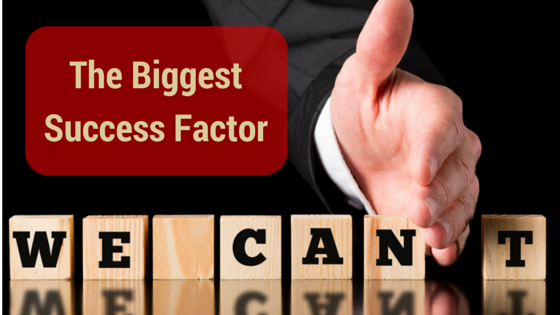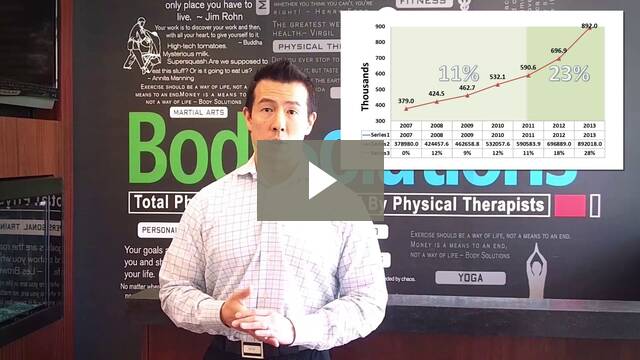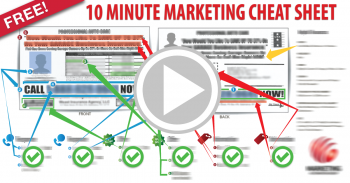All posts by Bob Britton
Charge More—Not Less—Than Your Competitors
Pricing plays a pivotal role in small business success. Here is a free tip—charge more than your competition.
I can almost feel your anxiety. If you charge more for your products or services, you lose customers, market share—and maybe your shirt. Right? Maybe not. The key is to shift your thinking, and the perspective of your client, away from price as the deciding factor for a purchase.
The premium perspective
Even during the recent economic downturn, luxury items and brands consistently outperformed low-priced goods aimed at the thrifty.
A sharp illustration of this concept is the re-positioning of Apple as a luxury brand. Instead of using its standard release channels for its new device, the Apple Watch, Apple followed the lead of luxury brands, inviting customers to preview the device by appointment. The base model starts at $350. Go for the gold version and pay upwards of $10,000.
Apple has always positioned itself as offering high value. While Apple will initially sell fewer units of its watch—they are priced to return a higher profit.
The cost of doing business
Instead of considering cost structure, many entrepreneurs look at what competitors charge to determine their own pricing. Here are a couple of reasons why that is a bad idea:
- While learning what your competitor charges is important, you have no idea what their selling price is actually costing them.
- It is certain there are competitors able and willing to undercut your selling price.
- If you sell the least expensive widgets on the market, you need to sell a lot of widgets.
- Why battle competitors to earn less?
Price wars keep small business owners from turning a decent profit or building enough positive cash flow to offer better services. Along the way, the time and money needed to create a thoughtful marketing approach never materializes. In any business, rock-bottom prices attract bargain hunters who remain loyal—until they find a better deal.
Refocus on value—start a conversation
An accurate cost structure is essential to price your products or services.
I work with entrepreneurs to understand their real costs. Not surprisingly, most small business people low-ball the worth of their own time. Setting higher prices to respond to your cost structure and the profit you want to make liberates you to provide extra value to your customer.
Because of their size, small businesses can usually out-maneuver bigger competitors by providing customized service and rapidly responding to the real-time needs and problems of their customers. Consider these B2B and B2C marketing points when creating a conversation about value rather than price:
- What is the issue? When you talk to a potential client, or a current customer, ask open-ended questions about their business issues. Take note of how you can leverage your current services to meet their needs, and combine those with ideas, or other resources, to help them resolve their issue.
- Offer expertise: By offering your time in exploring their questions or concerns, you offer expertise instead of a hard sell. Discuss dollars in the context of the scope of their problem—pivoting the discussion away from the cost of your product to the expense caused by the problem. By guiding the customer toward real solutions that may or may not have a payoff for you right now, you make a lasting impression as a trustworthy, reliable, business ally.
- Go the extra three miles: Offering time, education, and expertise to solve a business problem adds value to your services. By building a partner-based, rather than product-based relationship, your customer is likely to buy what you have to offer—repeatedly.
Value is an intangible that has different meanings for consumer and entrepreneur. I know a lot of small business owners that offer tremendous help to customers, but make two critical mistakes:
- Recognition of value: They do not factor their time and expertise into their cost because they do not recognize it as part of their products and services.
- Utilization of value: Since they do not recognize that worth, they miss out on golden opportunities to market and promote their own value.
When you charge more for your service—or your products—you differentiate yourself and your business. When I meet with business owners, we spell out their services and refine their marketing pitch so they can confidently describe the high value they provide to clients.
Here’s the result: you make more money for less work while building a more reliable, stable, customer base.
Unless it suits your business model, do not offer tiered pricing for lower quality services. Charging premium prices for high quality service is fair, and goes a long way to improving your financial bottom line.
When you need a clear conversation about the real cost of doing business and what you can do to see better profit—call me at 585-633-7563.
To your success,
Bob Britton
SOS: Beware Shiny Object Syndrome!
You just heard a great idea. You have to try it. It doesn’t really fit your business model and is beyond your core competencies—but, guaranteed, you will make a fortune.
Stop right there. All that glitters is not gold—for a lot of reasons.
Good for crows but bad for small business owners, Shiny Object Syndrome (SOS) is hazardous to the health of your business. Consider these examples:
- You have a proposal to submit to a long-standing client. You have a good relationship with your client and the proposal is a sure thing. You are working on it when an email comes in with marketing tips that promise to make you more money. Buy this, learn that, earn more. You buy it hook, line, and sinker and use your new-found wisdom to change your proposal pricing. You submit the proposal—and the client goes elsewhere.
- At a conference, you learn of a great program to motivate employees and increase productivity. You buy in. A consultant charges you a lot of money to study your company and train your employees. Six months down the road, no one remembers the concepts, productivity is the same, and the only difference is the financial hit.
- New marketing software—you must have it. Your digital marketing guy must have it, too, even though it is totally wrong for your business objectives. You buy it, deploy it, and watch it fail.
Whether you run a small business or a large corporation, everyone is vulnerable to shiny objects. They are pretty and promising. They are new and cool, swag for the business suite—and they can be a serious problem.
Take a breath and slow down
Distraction costs time and a lot of money. Each new email that interrupts your train of thought, or each freshly-pressed idea that disrupts your business plan, can distract you from achieving your business goals. Distraction keeps small business owners from succeeding in ways that include:
- Continually trying new ideas, methods, or software may become your version of business management. Eventually, you think, you will hit on the right combination, the perfect idea, the dream product.
- Your business could be in financial trouble. You hit a slump and need something new—somewhere. A turnaround company says it helps businesses just like yours. You cannot afford another mistake.
- Your small business is doing okay. You want more profit. Someone said try this new off-the-shelf inventory system—sounds like a good idea.
Distraction fragments your attention, diminishes your budget, and shows little return on investment—if you are even tracking ROI. All these examples point to entrepreneurs who do not see the big picture.
My job is helping small business owners see the bigger picture, make more money—and become successful. That means knowing which shiny objects to pick up—and which to leave behind.
How do you know what works?
When I meet with a small business owner, I ask ten strategic questions. Ten. Within 30 minutes, we get to the heart of their problem. After that we build a solid plan to create traction toward business goals. Distraction is not part of the deal.
How can you safeguard your business and your time against the distraction of shiny new things? Consider these tips:
- Too good to be true: What was true yesterday remains true today. If it sounds too good to be true, it probably is.
- No rush: The cutting edge of technology is a popular, and profitable, place to be these days. Nonetheless, there is no rush to try out new ideas or technologies before others use their time and money to do it for you.
- Use good business sense: Have you previously identified an issue this technology or process can address? Will this opportunity or start-up increase value to your client or customers? Does this innovation apply specifically to your industry, or would you need to reinvent it? If it passes muster, consult with business associates, or join a small business support team to discuss whether it is right for your big picture.
- Repeat after me—no rush: No offer, no product, and no process is so rare you cannot wait to research the idea and confer with others. If you are pushed for a decision, leave the shiny object for someone else to play with.
Innovation is changing the way we live and work. The other part of my business is creating unique technical solutions for entrepreneurs to meet their identified marketing needs, offer value to their customers, and increase their profits. When appropriate, the deliberate use of innovation is desirable—not distracting.
When you want to make more money, forget the shiny object and call me at 585-633-7563 for the business plan you need to achieve the profit you want.
To your success,
Bob Britton
Born to Win—Not to Fail: How Head Games Work Against Your Success
My goal is to make 50 people into millionaires in five years. Sound crazy? Would you like to be one of them? The place to start is in your head. Why? Because that is where your brain lives.
Three pounds of tissue, blood, chemicals, hormones, fat, and water help form your personality, character, and destiny. If you are not yet grateful for the ability to think—let alone succeed —you should be.
From that masterfully entangled web of neurons comes the ability to create a new outcome—but only if you have the willingness and courage to do it.
Failure—the path of least resistance
Loosely considered to be your system of beliefs, expectations, and aspirations, your mindset is the most powerful tool you have to become a successful entrepreneur. Instead of set in concrete, though, your mind must be set for the next development, the next idea—and the next day.
In your miraculous mind is the ability to create, achieve, and live your dreams. The opportunity to fail is equally accessible—and a lot easier. Do any of these circumstances sound familiar?
- Your early life was not easy—in fact, it was tough and not very comfortable. You made some decisions, turned some directions, formed a business, and it failed. You formed another and you are doing okay. You work too much, though, and you wonder if this is all there is to life. Those long-ago rough circumstances of childhood sometimes seem too near. You will never be a true success.
- It was a great job that made a good career. You rose through the ranks, developed skills, and saw personal and professional success. From the back of your mind came the thought that you might want to get off this ride and create a business you could lead and still enjoy life. You planned, and one day made the move with a good business plan. You landed safely, but are struggling. Your product and pitch are good but the dream is not what it seemed. Some doors have closed behind you. Was it a mistake?
- You lay awake again last night. Your business has its ups and downs, but you cannot break through. Lately, the numbers have not been good—but they should be. You listen to people, make changes, switch tactics, but deep down, you wonder if you have the ability or the ideas to really make your business work.
For entrepreneurs, it is easy to focus on operational challenges. Less obvious are ingrained habits as old as you are that drive your business goals into a wall. These head games prohibit good ideas from growing, and successful businesses from thriving.
I help my clients thrive, achieve financial freedom, and enjoy life. But my first job is to listen and learn. In addition to business status and numbers, I listen for the story that makes the map, the underlying paths that are leading good business people in a direction they do not want to go. I listen for head games.
And sometimes what I find, along with a fear of failure, is a fear of success.
Failure has something to offer
In a TED talk in 2012, Regina Dugan, the former director of the Defense Advanced Research Projects Agency (DARPA) asked an old question, “What would you attempt to do if you knew you could not fail?”
In her talk, Ms. Dugan details successful projects—like the internet—developed in an atmosphere free from of worry of failure. Is it realistic to set failure aside? No. Is it worth considering? Yes.
I work with small business owners that fear failure—and fear success. Conflicting thoughts warn of failure, even as they caution of success. Mental and emotional toughness is needed to hear these thoughts and cultivate their energy. How does that work? Consider this:
- Fear of failure: By itself, a healthy concern about failing is smart. Small failures can lead to huge success as you fine-tune skills and strategies. For confident business owners, small failures hone creativity. The bottom line is to keep such failures in perspective and learn from them.
- Fear of success: Fear of achievement can be deep-seated. Many people do not know what success looks like—they just know they want it. When it arrives, the tension and choices are sometimes hard to handle. Instead of opting for the familiarity of failure, take a step into success by joining a group of small business owners who understand your fears and help you find your future.
Head games are preconceived notions of self, and of business, that trip up entrepreneurs on a daily basis. I work hard to help business owners embrace new ideas, find new solutions, and accept a new paradigm for their lives—one of success.
If at first you don’t succeed—call me at 585-633-7563.
To your success,
Bob Britton
The Biggest Success Factor
Confidence: Why Do You Need It and How Do You Get It?
Faith in your ability to achieve your goals is a key factor in your success. Confidence—what is it, why do you need it—and how do you get it?
According to the Oxford dictionaries, confidence is defined as, “the feeling or belief that one can rely on someone or something; firm trust.” In any business or social setting, firm trust is the stuff that builds dreams and relationships. After all, if you don’t believe in yourself, how can your client or your customer?
Does confidence matter?
You bet. Although there are some reasons why a lack of confidence spurs action and pragmatic thinking, few millionaires are made by second and third guessing. Regardless of their business area, successful individuals share some important traits that include:
- Positive attitude about ambiguity: A willingness to embrace the uncertainty of “what if” is a quality shared by cutting-edge researchers, top executives, and successful business owners. The developing edge of science, economics, and technology belongs to those who imagine something positive out of an uncertain future.
- Flexible attitude: Adversity is a great teacher. Shutting down in the face of rejection and failure is a common response. The differentiator is how long you are down. Reassessment after a business or personal failure is appropriate. Getting back up, taking a hard look at what happened, and committing to forward movement is essential for personal or business success.
- Delegation: Part of being a successful entrepreneur is building a great team. This takes the form of people, processes, and systems. Willingness to consider new methods and processes is an across-the-board characteristic of successful people.
Confidence is an aspect of each of these traits. Some people are born with it, but most are not. Fortunately, it’s an easily learned skill that pays back over a lifetime.
Chicken or egg: Success or confidence?
For successful entrepreneurs, confidence is 90 percent of the battle. This means belief in yourself, in your ability to learn, and your capability to live outside of your comfort zone. When our business owner working groups meet, we discuss, distill, and develop strategies to boost success. Confidence is a natural by-product. We strive to create a virtuous circle where success builds confidence and confidence builds success.
For most people, confidence is a learned—and earned—skill. Here are some tips for building and bolstering your confidence:
- Prepare: Confidence grows from genuine preparedness. Whether facing a job interview, a difficult decision, or a complete break with your old way of doing business, you benefit when you are ready for the engagement. Being prepared means knowing everything you can about your business, what works—and what doesn’t—and being ready to do something about it.
- Be your best: Exercise, eat in a way that energizes you, and pay attention to the people and things that mean the most to you. A top tenet of my strategy for success is taking time away from work—instead of being the guy working dawn to dusk and after. Creating quality time lets you see your business for what it is—an opportunity to create personal and financial freedom—not a vehicle to grind away your earthly hours.
- Strike a pose: We all know about body language. What is yours saying about you? According to research, positions of relaxed ease reduce stress hormones and increase the likelihood that others perceive you as confident. Practice a firm handshake, try not to cross your arms, and be sure to look customers in the eye—but not for too long.
- Fake it until you make it: Practicing to project confidence means you may act, and even dress, more confident at times than you really are. The more time you engage in behaviors that help you feel confident, the more likely you are to become Confidence is not about doing everything right—it is about knowing your strengths, appreciating your weaknesses, and understanding what you can do with both.
I have talked about Brian Tracy before. The man is the global authority on personal and business achievement. Mr. Tracy talks about the difference between positive thinking and positive knowing. Both are important qualities, but positive knowing is about understanding your vision and surrounding yourself with people and possibilities that can take you there.
No one is an island
I tell business owners that no one is an island—and it’s very true. Good support is a key factor in building and maintaining personal and professional confidence. A good support system can help you through a hard fall, be there to help you rebuild, and hold on to optimism when you see none.
When you are spending too much time at work and your business confidence is sinking, call me at 585-633-7563.
To your success,
Bob Britton
Nature and Nurture: Grow Your Business through Marketing Automation
Marketing automation is a key differentiator between successful and struggling businesses. Let’s talk about how you can use today’s cutting-edge technology to nurture new leads and grow your business.
What is marketing automation?
As a business person, you already know the importance of marketing to build and maintain your client base. Marketing automation (MA) is the strategic integration of software and services. It saves you time, helps you develop prospects, and enables you to maintain the one-to-one customer contact so essential to satisfying clients and increasing your revenue.
MA is an essential aspect of customer relationship management (CRM) and offers some vital benefits:
- Time management: Whether you own or manage a small business or large enterprise, you can benefit from the time and production efficiencies provided by automation tools that help you manage social media, leads, referrals, and much more.
- Staffing: The time savings offered by software tools enables you to reduce staff and more productively utilize employees. By using software to handle labor-intensive tasks, you can strategically refine your human resource planning and marketing spend.
- Be effective: Marketing automation makes it possible for you to do more with fewer resources. For example, triggered email can save a sale, thank a customer, or remind a former client of the important services you offer. Triggered transactional emails contribute to conversions and help you partner with your clients rather than just push a sale.
- Build your brand: Use less effort to increase your profile. Automated tools can monitor your brand online or create multi-channel marketing campaigns. Consistent visibility keeps your brand fresh and improves inbound marketing opportunities.
- Analytics: You can gain value and conversions as you create and maintain client touch-points throughout the sales cycle using MA. At the same time, you can collect intelligence to refine and redeliver your message or a sales incentive.
Automation is only half of it
According to a study by the Lenskold Group, companies that use integrated marketing automation are more likely to report successful sales efforts. These companies also have a greater expectation of growth than companies who do not integrate MA with their CRM system. But is “set it and forget it” all there is to marketing automation?
The answer is no. While marketing automation helps you gauge and deliver the right message at the right time to make a sale, or sustain a relationship, it is only part of the picture. Although wrapped in leading-edge technology, sound marketing principles remain. Successful marketing still means:
Offer a product that is affordable and desirable to your target market
- Sell through the channels most likely to succeed
- Create a clear offer and well-tuned message
- Treat customer feedback like gold
At Marketing Automation Group (MAG), we couple MA strategies with strong support and training to help business owners expand their profit potential. Professional success grows from nurturing your knowledge of people and businesses. Whether you are a B2B or B2C enterprise, the personal side of marketing was never more important—or more accessible—than through the use of MA.
Why are nurture campaigns important?
Personal touch is at the heart of marketing automation. Processes like lead scoring and customer segmentation contribute to your ability to see what your customers like. Effective feedback surveys let you know what your client does not like.
On a personal level, MA lets you reach out and touch clients in ways that offer value and ongoing relationships. Consider these techniques:
A follow-up email offers a thank you for a purchase
- A card or small gift sends birthday greetings
- An email or discount incentive enlivens a business relationship gone stale
MA requires a focused message and skillful use of technology to save time and help you cultivate good business—and human—relationships.
Achieving Success
How can you achieve success through MA? According to Gleanster, a few challenges to overcome include:
Marketing automation loses luster when it is not used correctly or integrated in a bigger strategic picture. Companies using MA fall short of expectations when employees or management lack training or support to achieve their desired results.
- Reliance on old methodologies or marketing attitudes reduces the benefits of MA technology. Use of large market email lists, rather than refined subsets, defeats the delivery of the right message to the right consumer.
- Metrics are important for benchmarking success—or the need for a different strategy—but may not be developed prior to deployment by overwhelmed staff or business owners.
Marketing automation is not magic. It involves leveraging tools, strategic thinking, and the right message-to-market match. Do not struggle when you can succeed. If you are a business owner ready to gain the skills and support to reach for your dreams—talk to me today.
The Great Technology Lie…
Alright, I’ve had enough! I can’t take it anymore. It’s time to set things straight. If I see another person sending me emails saying ‘double your sales in just 1 week’ or $17,000 in only 2 hours, or any other crap like that, I’m going to spit!
I’m sure the people sending this stuff are good people, that’s something I tend to believe (that most people are good), unfortunately, these people have succumbed to the great lie that is so pervasive today. It’s the lie being told by so many people that it’s almost starting to feel true. You see it everywhere, on Facebook, on twitter, in your email inbox, on webinars.. it’s literally everywhere.
What is this great lie?
That technology (in any shape or form – CRM systems (Infusionsoft, Ontraport, ect..), Webinar platforms, video hosting, blah, blah, blah…) can build your business. Don’t you believe it!!!
Now, being that I’m a former Infusionsoft Ultimate marketer myself, you might say, WTF? How can I say that? When in point of fact, Infusionsoft did help me triple sales at my business.
Here’s where I’m coming from. After winning the award, I decided to start helping other business owners implement this amazing technology into their business. After about 4 years of working with people, trying to teach them to use this technology more effectively, you know what I’ve discovered?
About 95% of the people that buy these technologies aren’t ready for them at all, most bought them to solve a problem with their business that technology in and of itself CANNOT fix.
Problems like:
Poor to non existent delegation skills
Trying to do everything themselves
No assets (money or otherwise)
No management skills
No clear offer
No clear target market
Poor messaging
And a lot more….
You see, the REASON I was able to triple sales at my business is because I already had clear offers, a clearly defined target, and kick butt messaging, BEFORE I added the technology to get that message to the right person at the right time. If you LISTEN to all of the people who have been finalists for the Ultimate Marketer (or won it), they ALREADY HAD these key things in place before getting the software. Take that a step farther, and I’d say ALL the people who have done well on the web, have these things figure out as well.
At the end of the day – the technology amounts to about 10% of the overall puzzle. It’s NEVER the technology that creates the buying frenzy – it’s the message to market match. The other 90% of success is a combination of high brain activities like crafting a clear offer, and figuring out how to reach your target cost effectively and a lot of the list above…
If you truly want to be successful, as quickly as possible, then focus your learning on these high brain, high leverage activities and you’re success will be all but guaranteed.
Continue to buy into the lie, and you’re destined for a life of struggle and strife.
– Bob
P.S. Want a program designed specifically to teach you how to master these skills? Check out my webinar (you can register here), or just sign up here.
PUT that Coffee down!…

Have you seen the movie ‘Glengarry Glen Ross‘?
There’s a powerful scene in it where the ‘Rich guy’ is berating the salesmen trying to motivate them with
threats and insults, personally, I find it amusing, but many people are offended by it.
Whether you love it or hate it, hidden within this scene there’s a few gems of wisdom.
When Jack Lemmon’s character complains ‘the leads are weak’ in response to the criticism being hurled at him, the ‘Rich Guy’ says ‘The Leads are weak? You’re Weak!’
This is actually an insight into one of the most troubling and disruptive forces working against you as you try to build your business.
It’s called victim thinking.
Let me explain…
You’ve likely heard Henry Ford’s famous quote ‘Whether you think you can, or you think you can’t – either way you’re right.’
Simple, yet extraordinarily powerful.
Getting back to the movie quote, if Jack Lemmon’s character BELIEVES the leads are weak, whether they are or not, he will not be successful.
He’s mentally put himself in a place of being a victim to some external circumstance, in this case the leads.
He believes they’re weak, and because he believes that he can’t make sales (close deals).
Yet, in the same office, there’s another salesman, working the SAME leads that is closing sales left and right, something that the ‘looser’ salesmen seem blind to.
So can it be the leads that are the problem?
The answer is an unfortunate, YES – as long as they continue to BELIEVE they are the problem, they will always be the problem.
So I ask you now…..
Where have you allowed yourself to become a victim in your business?
What beliefs are you holding on to that are holding you back?
What external ‘forces’ have you come to believe control your destiny?
Victim thinking, nothing will kill your business faster.
I’ve found the quickest and least painful way to root out victim thinking is to get around people who don’t think that way. They’ve made it a habit to remove self-limiting beliefs and instead replace them with powerful, inspiring beliefs that support their dreams, goals and desires.
On your journey to success, you’ll need a few ‘head checks’ to remove your victim thinking, let this be a reminder to do so.
To Your Success,
Bob Britton
***
Member Spotlight Steve Young
Steve Young
Body Solutions – Voorhees NJ
Body Solutions was established in 2002 sort of by accident! Yes, I stumbled onto the business owner path because the physical therapist I worked for needed to sublease space within his clinic. In 2002 I started Body Solutions and at the time, we only did personal training back then. I eventually took over the physical therapy business within the facility in Eagle Plaza. By 2005 I was running the entire clinic… Also around that time, I realized I knew NOTHING about business. I was a physical therapist and science geek looking to learn business. – Steve Young
Steve joined Marketing Automation Group (MAG) in 2012 after years of working 14 hours days with little to no time for family, friends and hobbies. His ‘aha’ moment when he realized he needed to change something within his business was when his daughter entered his home office and said “Daddy, you’re ALWAYS working……”
Like most of our members, when Steve joined MAG he didn’t have the budget for the program but he took a leap of faith!
- in his first 2 years he went from 11% growth rate to 24%
- he experienced 2x’s the growth while working 40% less
- he also started a second business where he made $219,860 working 110 hours, that’s $1,998/hour!
- that was 54% what he made in 2013
You can learn more about Body Solutions Here.
How Big Is Your Marketing Funnel?
Dear Business Owner,
My name is Bob Britton, a fellow small business owner and president of Marketing Automation Group.
Most business owners I have worked with when they began with me, have at most 3 methods to attract high quality prospects and still don’t have enough customers.
What do I mean?
Most business owners get their customers from a referral, from a walk-in, or maybe, if they are lucky, from their website.
There are TWO problems with this, the first is that they do NOT have nearly enough lead generating methods in place and the ones they do have in place are NOT working as well as they could be, if at all.. Let’s take a closer look at this.
There are at least 9 ways to get new customers for your business (actually I’ve identified and laid out dozens, but for the purposes of this article, lets go with 9) not only 3. Here they are.
1. Referrals from past customers (the way I show you how)
2. Walk-ins
3. Pay Per Click Marketing (the way I show you how)
4. New Mover Attraction Program
5. Cross selling with other business in your area
6. Open Houses
7. Inbound visits to your web site
8. Outbound email marketing
9. Direct mail to your ideal prospects (done the right way)
The more methods you use the MORE customers you will get and the more money you will make,
Its simple math.
It is very risky to only have a few methods because lets say you rely on walk-in and no one shows up. Or a direct mail campaign that worked in the past stopped working, again you’re in trouble. Wouldn’t you want as many methods working for you as you can? BUT if you have 7 to 9 methods bringing in customers and one or two falls apart you are still OK. You can STILL deposit a lot of money in your bank account.
Make sense?
The second biggest problem I see is the methods a business owner IS using are being done poorly. Let me explain by giving you a few examples.
1. Referrals- There is NO real system for getting referrals from current customers, there is no follow up. It just kinda happens in a hap-hazard way. As a result TONS of potential customers are falling through the cracks and not using the businesses services. They are letting thousands and thousands of dollars needlessly slip away.
2. No Unique Selling Proposition (USP – No businesses are distinguishing themselves from everyone else. How is a potential customer supposed to choose YOU when YOU “look” and say the same things as every other salon?
3. Pay Per Click Marketing – All the ads I see are missing the KEY elements (great headline, free information offer, 24-hour free recorded message, 800 number, compelling offer, etc.) to a successful ad. And you wonder why the results are so poor on the ads you run.
If you have any questions, need some immediate advice, or would like to get involved with my program please give me a call at 585-633-7563.
To your success,
Bob Britton
Member Spotlight Lisa Rangel
Lisa Rangel
Chameleon Resumes – Rutherford, NJ
Lisa Rangel, Managing Director of Chameleon Resumes, has built a full-service branded executive resume writing service and leadership job search consultancy specifically created to partner with executive candidates who want professional guidance from top resume, LinkedIn, job search and interview experts to navigate today’s complex, high touch, technological marketplace. Lisa’s unique combination of qualifications set her apart, making her a leader in the job search industry:
Selected as one of the Top 100 Career Websites by Forbes.com
Hired as a Group Moderator of LinkedIn’s Premium Job Seeker Group
Regular contributor of LinkedIn Profile and Lead Generation Articles for the Official LinkedIn Blog
Lisa joined Marketing Automation Group (MAG) in March 2013.
- in her 1st quarter after joining MAG, Lisa made $100k
- that was 3x’s what she made in her 1st quarter in 2013
- that was 81% more than she made in 2012
- that was 54% what she made in 2013
You can learn more about Chameleon Resumes Here.











